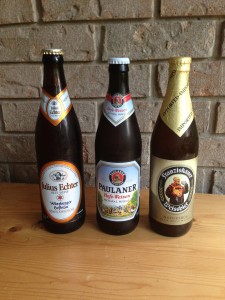This article has four sections preceding it — the concept of a brut IPA, the grist, and the mash, the enzyme used to make a highly fermentable wort, hopping and the boil, and fermentation.
Brut IPA is meant to be fizzy. And, there are a couple ways you can accomplish this. As with any beer, you can force carbonate it in a keg, or bottle condition it. However, given the high level of carbonation desired, you will need to approach this differently, in some ways, from when producing a beer with an ordinary level of carbonation.
How carbonated should a brut IPA be? Given that this type of beer currently only exists as a cluster of individual examples, you have some leeway to decide for yourself. The average level of carbonation in an ordinary craft beer or standard lager is 2.4–2.6 volumes of CO2. Anything over this should count as more highly carbonated. For reference, Belgian tripels and Belgian strong golden ales are often around 4.0 volumes of CO2, German wheat beers can have carbonation levels as high as 5.0 volumes of CO2, and Champagne is often around 6.0. [Read more…]



Recent Comments